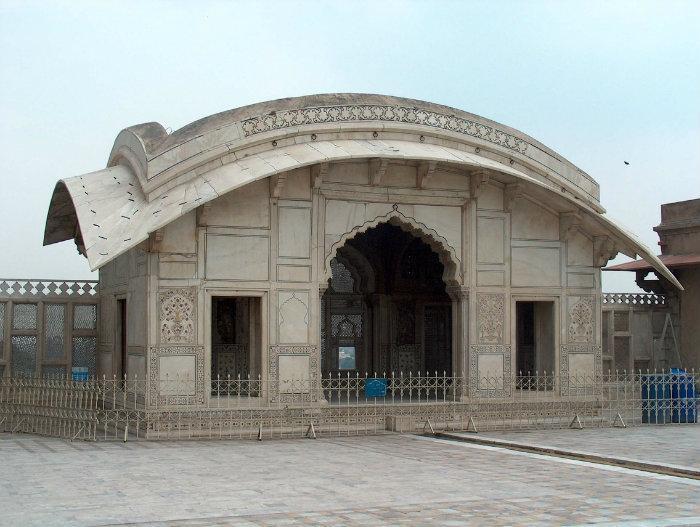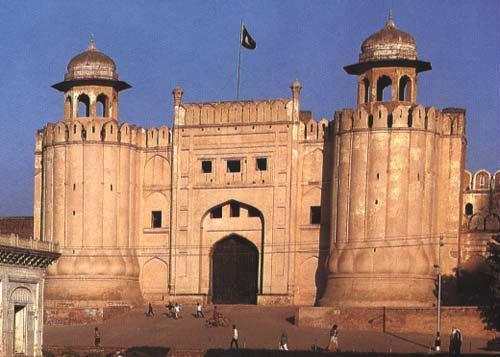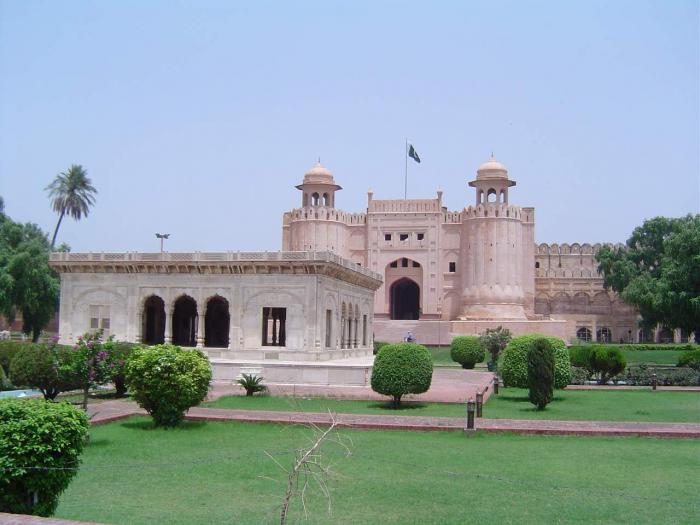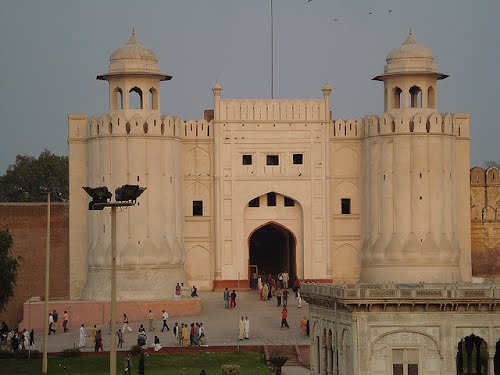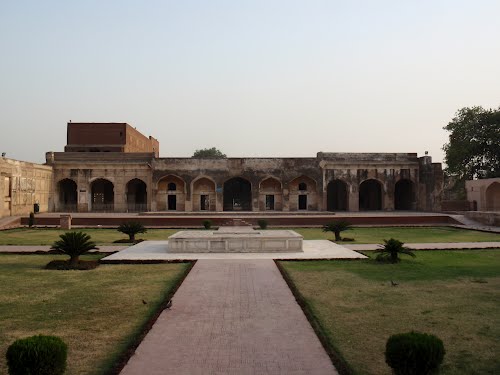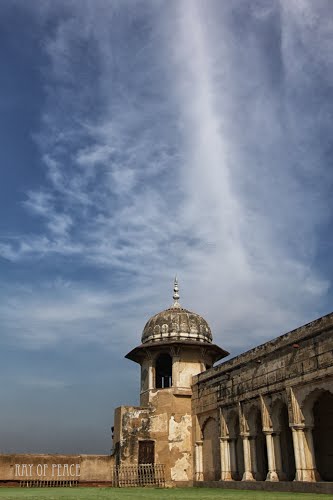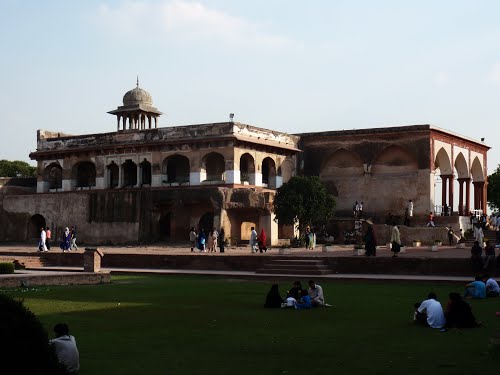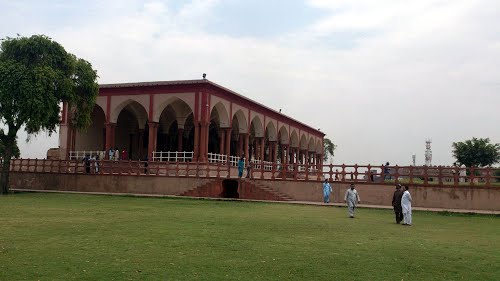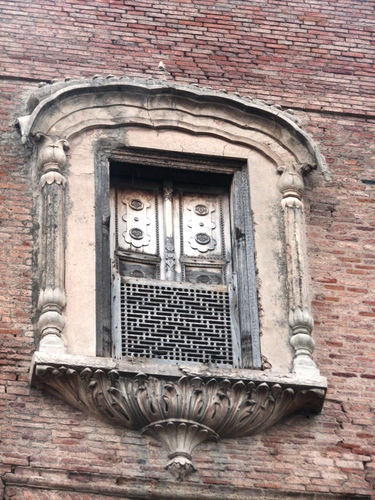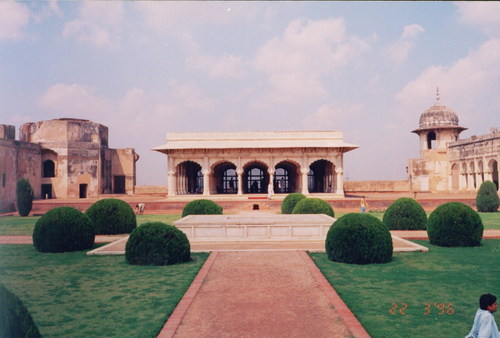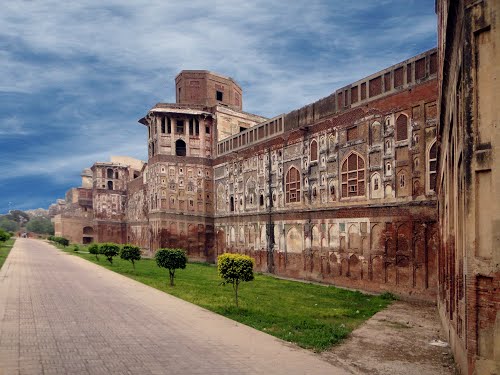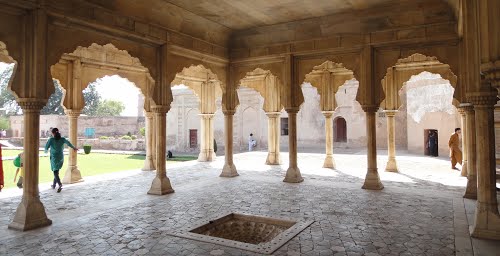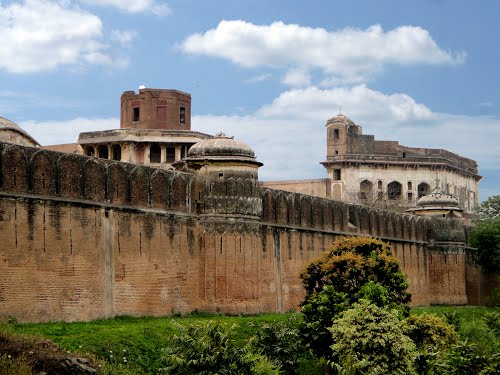The Lahore Fort, locally referred to as the Shahi Qila, is a citadel in the city of Lahore, Punjab, Pakistan. It is located in the northwestern corner of the Walled City of Lahore in Iqbal Park, which is one of the largest urban parks in Pakistan. The trapezoidal composition is spread over 20 hectares.
Origins of the fort extend far into antiquity but the existing base structure was built during the reign of Mughal Emperor Akbar between 1556–1605. It was regularly upgraded by subsequent Mughal rulers and after the fall of the Mughal Empire it fell to Sikh and British rulers. It has two gates. One of the gates built by Aurangzeb is called Alamgiri gate that opens towards Badshahi mosque and another older gate built by Akbar is called Maseeti or Masjidi gate that opens towards Maseeti area of Walled city. Currently Alamgiri Gate is used as the principal entrance while Maseeti Gate is permanently closed. The fort manifests the rich traditions of Mughal architecture. Some of the famous sites inside the fort include Sheesh Mahal, Alamgiri Gate, Naulakha Pavilion, and Moti Masjid.
In 1981, the fort was inscribed as a UNESCO World Heritage Site along with the Shalimar Gardens. The Pakistan Pavilion at Expo 2010 is designed as a replica of the fort.
History
Mughal and pre-Mughal era
The origins of Lahore Fort are obscure and traditionally based on various myths It is unknown who first built a fort there. According to some Hindu myths, its foundation was attributed to Loh, the mythical son of Lord Rama. However, the first historical reference to a fort ever actually existing on that location goes back to the 11th century, during the time of Mahmud of Ghazni. It was a weak mud fort that was subsequently destroyed. The earliest reference for this is that in the 1240s, it was destroyed by Mongols. After nearly 50 years, a new fort was constructed in its place by Balban of Mamluk dynasty of Delhi Sultanate. It was destroyed again around 1399 by the invading forces of Timur only to be rebuilt by Sultan Mubarak Shah Syed after 20 years. In the 1430s, the fort was occupied by Shaikh Ali of Kabul.
The present design and structure of the fort, however, traces its origins to the Mughals. In 1575, Mughal emperor Akbar occupied the fort, which was used to guard the northwest frontier of the kingdom. He rebuilt the fort with solid bricks and lime and over time lofty palaces were built to which additional beauty was lent by luxuriant gardens. The other structures built by him included the Doulat Khana-e-Khas-o-Am, Jharoka-e-Darshan, and Masjidi Gate. On the other hand, his structures were replaced by subsequent rulers. However the structures built by him were replaced by subsequent rulers. Shah Jahan built the Shah Burj, the Sheesh Mahal and the Naulakha Pavilion. His son Aurangzeb built the entrance, Alamgiri Gate, which is flanked by semi-circular towers with domes pavilions.
Sikh era
The fort was captured by the Maratha forces under Raghunathrao in 1758. Then the Bhangi Sikh Dynasty (1716–1810), one of the 12 Sikh Misls of Punjab ruled the city of Lahore from 1760 until 1799. When Ranjit Singh, another Sikh chief from the Gujranwala area, took Lahore from the Bhangi Misl the Lahore Fort fell to Ranjit Singh and in 1801 he was crowned as the emperor of the Sikh Empire. The fort and the city from 1799–1849 remained under the control of Ranjit Singh and his sons, grandsons, and wives until the fall of the last Sikh empire in 1849.

